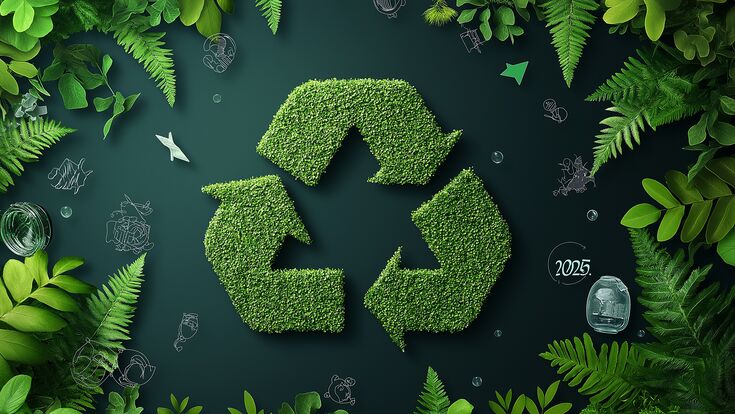The future of recycling : TOMRA's recycling trends for 2025: deep learning, real-time monitoring and more

As a new year begins, a question arises: what key trends will shape our industry? Dr Volker Rehrmann, EVP and Head of TOMRA Recycling, a global leader in sensor-based sorting solutions, provides insights into key trends in sorting and recycling.
1. Deep learning
In 2025, the recycling industry will continue to be shaped by deep learning. This subset of artificial intelligence (AI) has achieved significant sorting milestones in the past year, such as separating food from non-food plastics.
Deep learning is poised to tackle increasingly complex sorting tasks and expand into new segments, such as metal sorting, bringing new levels of efficiency and sustainability to the recycling industry.
Traditional systems, still critical after decades of refinement, focus on sorting by material type (NIR sensors) or colour (VIS sensors). The value of deep learning lies in object recognition using full colour cameras that identify the types of objects based on shape, size, dimensions and more. Systems such as TOMRA's GAINnext™ use deep learning to mimic human vision and can be precisely trained to automate sorting tasks that were previously done manually.

2. Real-time monitoring
By 2025, there will be greater transparency in sorting facilities, with advanced AI and cloud technologies increasingly being used to analyse waste. Platforms such as TOMRA Insight collect data directly from sorting systems, while tools such as PolyPerception's waste analyser use cameras to monitor and classify waste in real time at key sorting points.
Digital twins of sorting lines allow detailed object tracking and analysis. These systems enable operators and recyclers to make data-driven decisions to improve output quality, prevent material loss and anticipate potential disruptions. Benefits include increased efficiency and compliance with regulatory standards.
3. European Packaging and Packaging Waste Regulation (PPWR)
Due to its far-reaching impact on the industry, the European Packaging and Packaging Waste Regulation (PPWR) will be a critical focus in 2025.
With a target of 70% recyclability of all packaging by 2030 looming, companies will need to urgently adapt to strict recyclability requirements and robust infrastructure. The PPWR requires plastic packaging to contain a minimum of 10-35% recycled content by 2030 - depending on the type of plastic and its intended use - with higher targets set for 2040.
These goals are driving innovative environmental design and recycling technology, including advanced mechanical and chemical recycling.
The PPWR will provide planning certainty for industry and encourage investment, particularly in the demand for recycled content in plastics, potentially helping to stabilise prices for recycled materials. Positive developments in this respect could be seen as early as this year.
4. Decarbonization: aluminum recycling
In the aluminium sector in particular, decarbonisation will remain a priority in 2025. Many large companies have committed to net-zero targets, driving demand for recycled aluminium and high quality raw materials.
The use of recycled aluminium offers significant CO2 savings compared to other materials. Achieving ‘green’ aluminum requires increased aluminum sorting and greater granularity, such as separating aluminum alloys (1xxx, 3xxx, 5xxx or 6xxx series) into high-purity fractions. LIBS (Laser Induced Breakdown Spectroscopy) technology continues to lead the way in this area and TOMRA plans to install several AUTOSORT™ PULSE systems worldwide in 2025.
5. Focus on lesser known material streams
While recycling plastics, organic waste and aluminum is well-established, the recycling of other material streams are still in their infancy and will gain attention in 2025.
For example, the production of recycled materials of the same quality as virgin raw materials is now possible thanks to wood sorting technologies. Processed and unprocessed wood can be separated and medium density fibreboard can be efficiently recovered. These solutions could be implemented on an industrial scale this year. Similarly, advances in textile recycling will show what's technologically feasible and pave the way for wider adoption.
From innovative sorting technologies to regulatory changes, 2025 promises to be a transformative year for the recycling industry.
